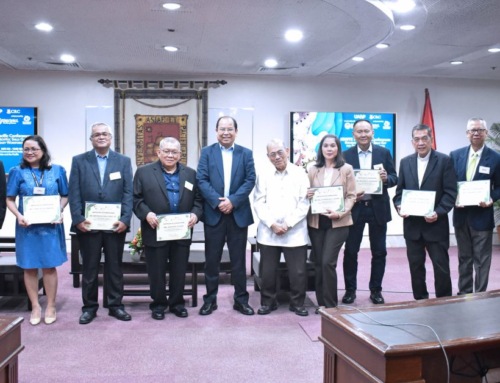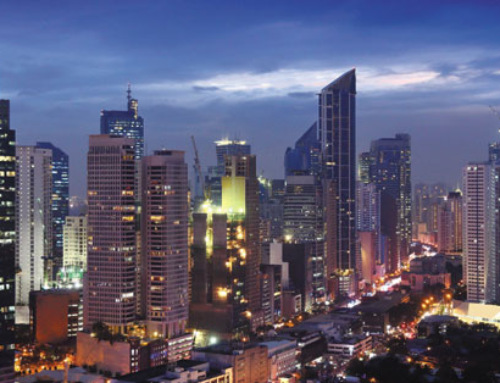This article was originally posted on 2019-07-12 19:28:14
“The Philippine economy has two ‘sweet spots’ going for it in the next twenty years at least,” says eminent economist Bernardo M. Villegas in a paper released during the recent Midyear Business Economics Briefing at the University of Asia and the Pacific. The first is the country’s young, growing, and English-speaking population; and the second is its geographical proximity to the rising economies of China, India, and the ASEAN Economic Community (AEC). But Villegas also warned that Philippine leaders need to address two challenges if they want to take full advantage of these “sweet spots”: improving the quality of education, and raising the country’s agricultural productivity. Demographic Sweet Spot. Villegas said that the Philippines’ “demographic sweet spot” gives it a big economic advantage over neighboring countries, whose population growth rates have gone into decline. He said that this was “in stark contrast with practically the whole western world, and the developed territories of East Asia such as Japan, South Korea, Taiwan, Singapore, Hong Kong, Macau, and even surprisingly China and Thailand that are still relatively poor countries.” Villegas noted that this young workforce provides the manpower that drives the country’s two leading economic growth engines – the OFW and BPO-IT sectors. He added that growth in these two sectors has raised the economy’s savings rate to over 30 per cent of GDP – at par with the economic powerhouses of neighboring East Asia. On top of all that, these gains have boosted demand for domestic tourism, fueled the country’s consumption-led growth, and are attracting investments from businesses who want to tap the domestic market. By contrast, he noted that declining populations have led falling growth rates in many developed countries. He explained how aging populations in these countries prevent their governments from focusing on productivity-enhancing investments. China, India, and the AEC. The second “sweet spot” Villegas identified was the Philippines’ unique geographical location. He asserted that this will be a big advantage in the 21st century, as the focus of global economic growth shifts away from the developed nations of the west, and towards the developing nations of Asia and the Pacific. According to Villegas, the Philippines is particularly well-positioned to take advantage of the three-cornered competition between China, India, and the AEC. China alone has 500 million high-middle income consumers – the world’s largest consumer market, easily accessed by Philippine businesses. But the Philippines is also well poised to tap the rapidly growing consumer markets of India and the AEC. Villegas considered this significant because India is not faced with the same declining population growth rates which confront China. So he asserts that India will likely overtake the growth of China’s consumer markets in the long term. “Hundreds and millions in these countries will be transitioning from low-middle income to high middle income status (from average annual per capita income of about USD 3,000 to about USD USD 8,000),” says Villegas. “This is the range at which demand for all types of consumer goods, both durable and non-durable, grows geometrically.” In China, he recalls, recent GDP growth of 6 to 8 per cent has led to double-digit demand for educational and health services and products like appliances and cars. Education and Agriculture. Villegas warned that the Philippines will not be able to maximize its demographic advantage if it does not invest in its educational system. Likewise, he says the country needs to solve its perennial problem of “very low agricultural productivity” if it wants to take tap the consumer markets of its neighbors. Villegas said that the Philippines has made some headway in terms of improving the state of education. “The growing population,” he said, “is increasingly being turned into a real asset by very significant increases in government spending on education (especially basic education) and health services.” He noted that the private sector has made some contributions as well. Many of the country’s largest conglomerates investing in universities and technical institutes in an effort to improve the quality of technical and professional personnel. As for the problems of the agricultural sector, Villegas said that the government’s Build Build Build program was on the right track in focusing the bulk of its infrastructure development on the countryside, rather than on metropolitan areas like Manila and Cebu. But he also asserted that “an indispensable next step is to review our agrarian reform program so that we can allow the millions of small farmers to consolidate their units in order to attain economies of scale.” He suggested that the Philippines should explore models that have already worked in some of our neighboring countries, such as cooperativism in Taiwan and South Korea; the nucleus estate model of Indonesia; and the Federal agency (FELDA) and corporation (FELCRA) models of Malaysia. Locally, he also noted the Land Bank’s model of “corporatives,” which blends the most useful elements of cooperatives and corporations, is worth looking further into. Midyear Business Economics Briefing. Villegas’ paper on the “Double Sweet Spots” of the Philippine economy was one of three papers he shared at the closing of the 2019 Midyear Business Economics Briefing last June 25, 2019. His other papers focused on the future role of China in regional development, and proposed strategies for the Philippines in engaging China, India, and the AEC. The UA&P School of Economics and the Business Economics Club usually hosts two Business Economics Briefings each year – one in June, and another in November. • Remi E. De Leon/CRC
———————————————
The CRC University Papers Series highlights research work done by faculty and staff at UA&P, and by consultants at the CRC. Remi E. de Leon is the Communication Officer for Research at the Center for Research and Communication. One of the founders of CRC, Dr. Bernardo M. Villegas has been advising Philippine presidents on industrial policy formulation and investment promotion since the 1970s. Presently CRC’s Director for Research, he is also a founding member and former director of the Makati Business Club, and a former president of the Philippine Economic Society.






